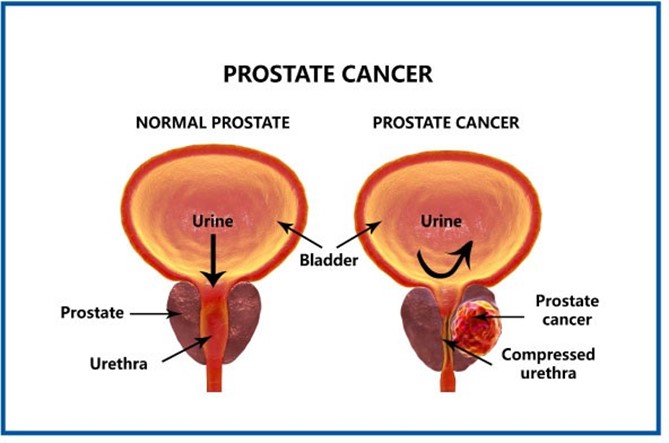A client is diagnosed with stage I cancer of the prostate. The nurse interprets this as indicating which of the following?
Tumor is confined to the prostate gland.
Tumor has expanded to the bladder.
Cancer is small with no symptoms.
Tumor has spread beyond the prostate.
The Correct Answer is A
The tumor is confined to the prostate gland. Stage I prostate cancer means that the tumor is localized to the prostate gland and has not spread to other parts of the body.

B: This option is incorrect because it indicates that the tumor has expanded to the bladder, which is not indicative of stage I prostate cancer.
C: This option is partially correct, but it does not provide a complete picture of stage I prostate cancer.
D: This option is incorrect because it indicates that the tumor has spread beyond the prostate, which is not indicative of stage I prostate cancer.
Nursing Test Bank
Naxlex Comprehensive Predictor Exams
Related Questions
Correct Answer is B
Explanation
Assess the client for the ability to ambulate independently. The highest priority nursing intervention for a client admitted to a neurologic rehabilitation unit following a cerebrovascular accident is to assess the client's ability to ambulate independently. This assessment will help the nurse determine the level of assistance required and develop an appropriate care plan.
Option A. Providing instruction on blood-thinning medication is not the highest priority as it can be done later when the client's ambulation status is stable.
Option C. Including the client in the planning of care and setting of goals is important but not the highest priority in this situation as it can be done after assessing the client's ambulation status.
Option D. Praise the client when using adaptive equipment, is not the highest priority as the client's ambulation status is more important at this point.
Correct Answer is C
Explanation
Allow the client to follow your lead. This technique would be most beneficial for the ambulation of a visually impaired client. The nurse should allow the client to follow their lead because they are more familiar with their surroundings and can navigate better.
Option A, speaking before touching the client, is appropriate but not as effective as allowing the client to follow the nurse's lead.
Option B, providing a see-eye guide dog, may not always be feasible.
Option D, providing a detailed description of the room and walkway, may be helpful but not as effective as allowing the client to follow the nurse's lead.
Whether you are a student looking to ace your exams or a practicing nurse seeking to enhance your expertise , our nursing education contents will empower you with the confidence and competence to make a difference in the lives of patients and become a respected leader in the healthcare field.
Visit Naxlex, invest in your future and unlock endless possibilities with our unparalleled nursing education contents today
Report Wrong Answer on the Current Question
Do you disagree with the answer? If yes, what is your expected answer? Explain.
Kindly be descriptive with the issue you are facing.
